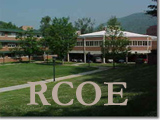Artifact # 11
Websites For Students Whose Primary Language Is Not English
Context
In the year 2000, North Carolina estimated that over 44,000 students spoke little or no English. That is twice the population of Watauga County! These web sites are designed to help those who do not speak English very well, and to help others to communicate with them. It is difficult for students who have English as a Second Language (ESL) to succeed in school because they have difficulty processing information that is in English. By viewing these web pages that translate material into their native language, they will be able to do better in school and also learn English-speaking skills in the process.
Impact
For this activity, I went on Internet Explorer and looked at www.freetranslation.com to create a letter to parents of ESL students who may not speak English as well. The site automatically translates the message that I type in English, to the language of my choice. I chose to translate to Spanish, so my letter could go home to a Spanish-speaking family. I was also able to translate an entire web page into another language. The Free Translation Web Page enables you to translate an entire website into another language. I translated the Appalachian State University Homepage into Spanish and printed it out as well. I also visited www.englishlearner.com, which has many links to sources that will help teachers find activities for students whose primary language is not English. I printed one page from this site that is beneficial to teachers who may need help working with ESL students. As teachers, we will have students who are ESL and these sources provide a way to help us communicate with one another.
Alignment
This
assignment meets Competency 13.3 by using media
and technology to support learning for children whose primary language
is not English. I utilized bi-lingual software from the Internet
to translate English text into another language. Several online web
sites provide a way to translate one language to another, which will help
ESL students and teachers communicate. This project meets INTASC
Principle #3 because the teacher is using an understanding of the children's
different learning styles, including learners whose primary language is
not English, and altering the approach to teaching his/her students.
